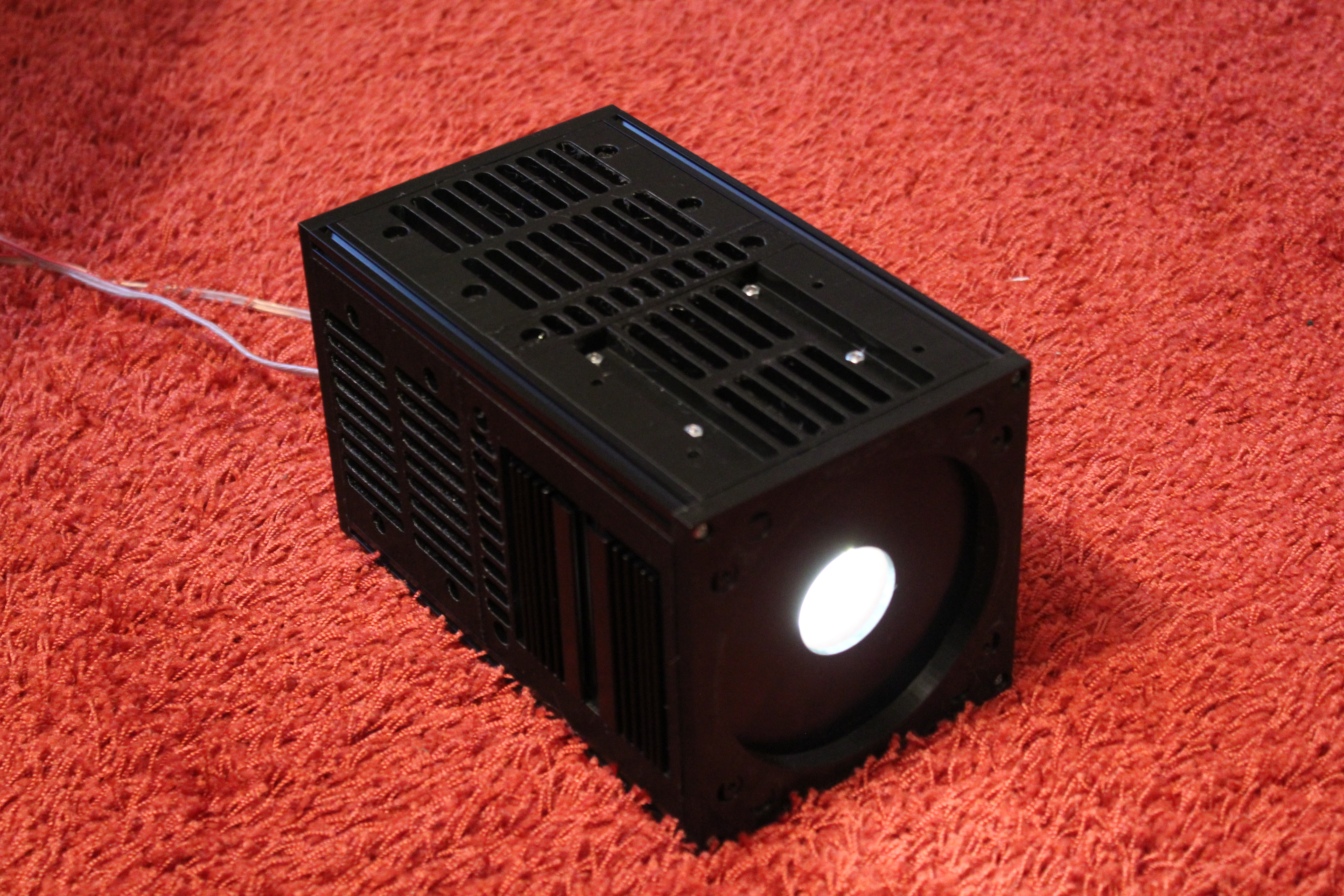The new version of WOSP-RT-DESKTOP has been tested and we think it is our best product for thin film analysis so far. Read the details here.
Category Archives: Company
WOSP-DESKTOP-RT system improved
Our desktop system for absolute R and T measurements has been modified: You can now use a combination of the WOSP-LEDO-P light source and an Avantes spectrometer to record spectra in the range 270 … 1050 nm. A polarizer is an optional add-on.
The system needs a table of dimensions 1000 mm * 700 mm or larger (table not included in the system). The new design allows reflectance measurements at 8° angle of incidence which was not possible with the previous version.
Polarizer for R and T measurements
We have added a polarizer to our desktop R and T measurement system. The same polarizer can be used for all systems recording R and T for shiny, non-scattering samples.
The desktop system records the 100% signal when detector and light source are positioned directly opposite to each other:
After this measurement you can do absolute reflectance measurements at arbitrary angles of incidence. We have generated tools to conveniently set fixed angles of incidence – here we have used 45° and 60°.
The graph below shows 4 absolute spectra of a silicon wafer (45°, 60°, s- and p-polarization). We could achieve almost perfect match of simulated spectra based on literature data of the optical constants, fitting a thickness of 6.2 nm of the native SiO2 layer on the wafer. Data acquisition for each spectrum took less than 1 second (averaging 18 spectra using an integration time of 50 ms).
WOSP-UVIS
Based on the WOSP-LEDO light source we have developed a spectrometer system that can be used to measure reflectance spectra in the wavelength range 270 … 900 nm. The light source is based on LEDs only.
2 array spectrometers (not shown in the images) are used to record the sample signal and a reference signal at the same time. This makes the results independent of light source drifts.
Samples must be positioned within a few mm distance to the sample port of the system. The measured spectra are tolerant against small sample tilts or height differences.
Spectral quality is the same as for WOSP-LEDO. The unit can be used as a light source for transmittance measurements as well.
The system requires an external power supply of 12 V DC.
WOSP-LEDO – a new UV-Vis light source based on LEDs only
Our new WOSP-LEDO light source generates a homogeneous area of light emission, covering the spectral range 270 … 900 nm. It uses LEDs only – small power, long lifetime.
You can point a collimated field of view of an array spectrometer to the center of the light source and record transmittance or reflectance spectra in lab quality, within a fraction of the time a lab instrument would need.
The following transmittance spectra (100%, 0%, Schott Borofloat glass) have been recorded in less than 1 second, with a distance of about 1 m between light source and detector:
Zooms into the 0 and 100 percent spectra show excellent spectral quality:
ICCG12
ICCG 12 conference, June 13, 2018, 3 PM, Würzburg, Germany:
Wolfgang Theiss will give a presentation called ‘Up and down – shifting the limits of optical spectroscopy in large area coaters’
Software training – new strategy introduced in January 2018
Our software packages are powerful – but also complex. The large variety of possible applications and numerous program features are certainly demanding. An introductory training with focus on the user interface and basics of optical modeling significantly shortens the time it takes new users to get going.
Since our users are distributed world wide we have done more and more remote online training during the last years. It turned out that in most cases the number of questions during the sessions has been small, i.e. usually there is not much interaction. With this rather one-directional lectures in mind, we have decided to adapt our working style concerning software training.
Starting in January 2018 we will start to publish a series of recorded lectures, available and free of charge for everybody. New users can follow these sessions at their on speed and whenever there is space in their agenda. In addition to the introduction of training videos we will intensify the FAQ section of our website, hoping that we will give answers to most typical questions that may arise.
If users are interested in deeper discussion we offer to reserve some hours of intense explanations -however, this will not be in real time, and it will not be for free. We will write answers to written questions or prepare short videos, with some time delay between questions and answers. This way everybody can work at a reasonable time of the day, and no information is lost. You can simply repeat a complex procedure and watch it as long as necessary.
We hope that this new concept will prove useful and comfortable for all participants.












